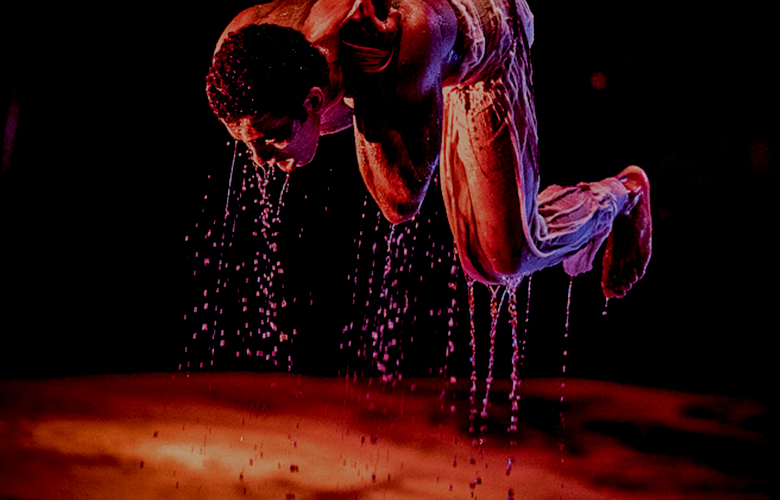
Tom Fairchild is a travel and portrait photographer who also specializes in capturing events and stage performances. Live theatre and events are some of the most difficult and challenging environments to be a photographer. In theatrical photography, subject items are dark, things move quickly and lighting is a challenge but here are ten tips to help you take great theatrical photos.
1. Anticipate – Know Where the Action Will Be
You know the show – take advantage of it! The often-quoted street photography pioneer, Henri Cartier-Bresson, coined the term “The Decisive Moment” to describe that one precise sliver of an instance in time that captures a larger feeling. Think about when and where those points are in the show and be ready for them. Have your framing, composition, exposure and settings all ready to go so once that “decisive moment” strikes, you are ready for it. Make up a shot list ahead of time to help prepare and organize your limited time shooting.
Have everything – exposure, camera settings, framing, etc. – dialed in and ready before the moment happens. This punch was on my shot list so I knew to be ready for it when it came.
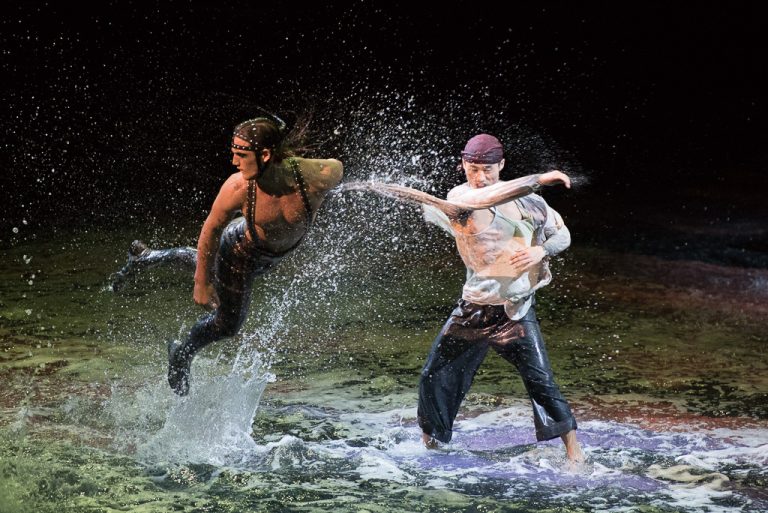 ©Tom Fairchild Photography
©Tom Fairchild Photography2. Ask Around – “Phone a friend”
Every department knows of an amazing photo moment in a show if only someone were there to take it. Find out what that is! Ask performers, ask the crew, and ask the front of house staff what they consider to be key moments of the show and what they have always felt were particularly dramatic or impactful moments. Incorporate their ideas into your shot list and refine your plan of where and when you want to be in various places around the theatre.
Ask artists, directors and also technicians about where great photos are hiding. Don’t forget the technicians are watching the show every single day, usually from unique perspectives.
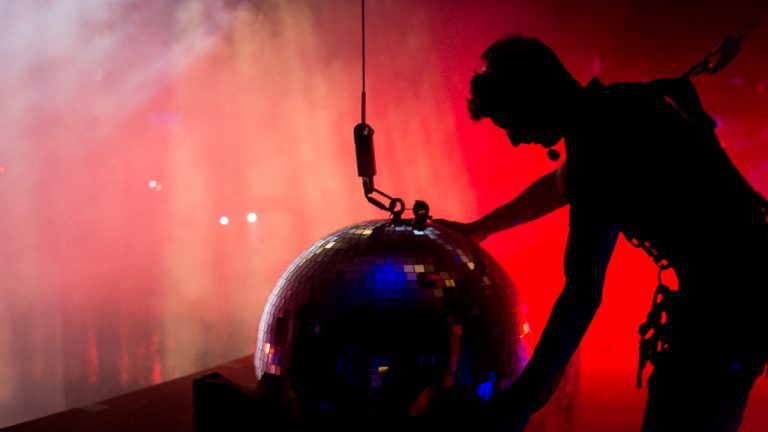 ©Tom Fairchild Photography
©Tom Fairchild Photography3. Study the lighting
Of all the departments to talk to, the lighting department is the most important. These guys have a lot of experience and are paid a lot of money to make the show look good; it is wise to make the most of all their knowledge. This is doubly true if you are shooting a show that you have never seen before. Low fog, hazers, and smoke will all have huge effects on lighting and therefore your photos. These are just the guys to explain to you how. Lampies will direct you to many great photogenic moments – plus they want to show off their creation of impressive lighting states just as much as any performer!
The lighting in this photo is what makes it. The contrasting colors combined with the backlit water drops makes it extremely impactful.
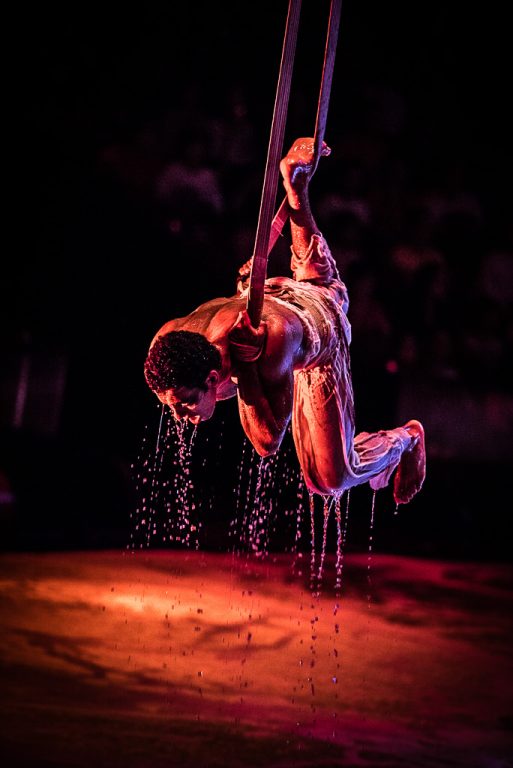 ©Tom Fairchild Photography
©Tom Fairchild Photography4. Don’t be afraid of the dark
One of the most common mistakes I see in theatre photos is one that your camera makes. When set to full auto, cameras will try to take the best average exposure of lights and darks. A lot of the time on stage though there will be large swaths of dark with a couple of extremely bright highlights under the spots. Typically, this means photos will come out as a blotchy shadowy mess with completely unrecognizable white spots where your action is supposed to be. To counteract that, set your exposure manually if you are comfortable enough doing it.
If you are not, or if the lighting conditions are changing too rapidly to keep up with manually (as they often are in circus, concerts, or other fast action shows), use spot metering to expose your brightly lit subjects correctly. Most importantly, don’t be afraid of the dark! Let your blacks fall off to be completely black. Theatre is different than most other photography situations and it is completely ok to lose your deep shadows. As an added bonus this allows you to shoot with a faster shutter speed and/or a lower ISO which means sharper, less noisy photos!
If the camera tried to choose the correct exposure, this photo would just be a noisy shadowy mess with a really bright spot on top.
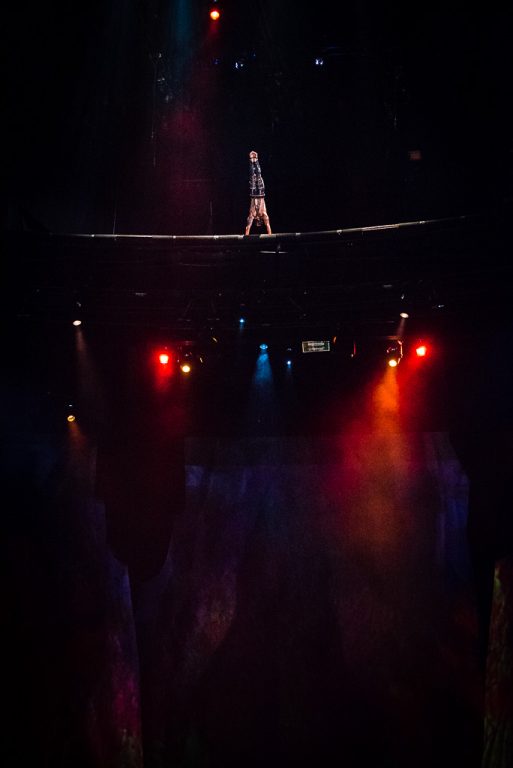 ©Tom Fairchild Photography
©Tom Fairchild Photography5. Vary your position
A whole set of photos from the same position is boring. If at all possible, move around during the show and get photos from a variety of angles and a variety of places. It is even better if you can get up to the balcony, the orchestra pit, the wings, catwalks, or anywhere else where you can get a unique perspective and a good shot. Don’t overdo it but a couple shots going back into the crowd can be good too to show the size of the venue and give some context.
Get high, get low, even get underwater to get a different perspective on the action.
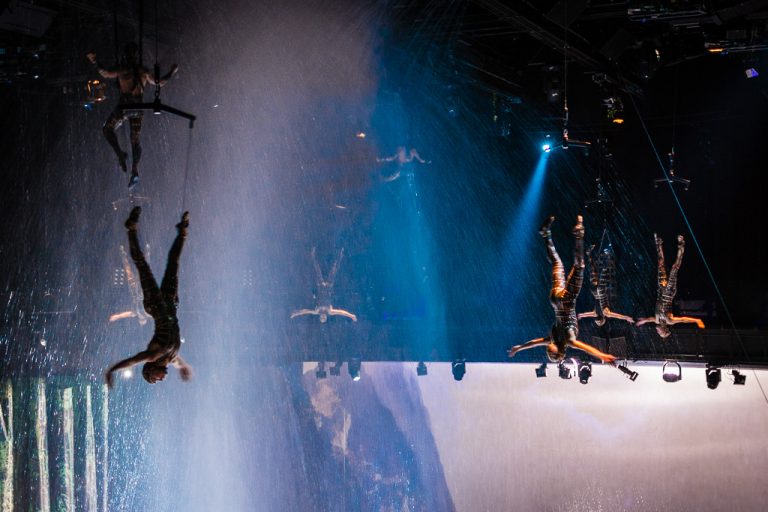 ©Tom Fairchild Photography
©Tom Fairchild Photography6. Shoot Wide, but Mostly Shoot Tight
In a similar idea as the previous tip, vary up the focal length (“zoom”) of your photos. Wide shots are great for establishment, or when the whole stage is filled with action but don’t rely on them too much. Tighter shots are what people usually want to see, especially in drama and comedies. Have a range of photos but by and large, the closer and tighter you can get, the better. Well-renowned war photographer Robert Capa once said, “If your pictures aren’t good enough, you’re not close enough.” The hair, makeup, and wardrobe departments will love you too for showing off all of their hard work!
Actors work hard on their expressions – capture them!
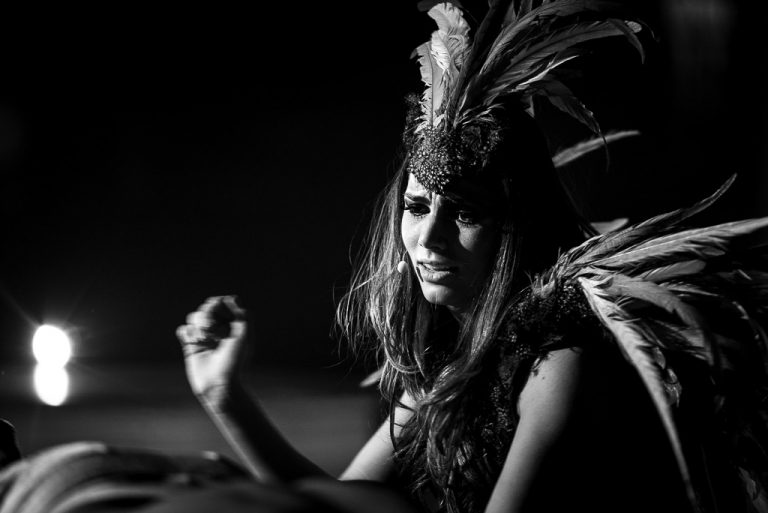 ©Tom Fairchild Photography
©Tom Fairchild Photography7. Emotion is everything
A big advantage to shooting tight is capturing the emotion on stage. All too often I see photos of theatres that look like stick people standing on a set. The whole idea of theatre is conveying emotion and it is up to you as the photographer to capture that. If you have made your previously-mentioned shot list, you should know when all the key moments of the show are coming and should be ready to get in close and really capture that moment. Don’t be afraid of what you’re missing – focus on what you’re getting. Think to yourself about what you want the subject of your photo to be and fill the frame with it.
Body language and expressions both convey emotion on stage, as does the direction that performers are looking.
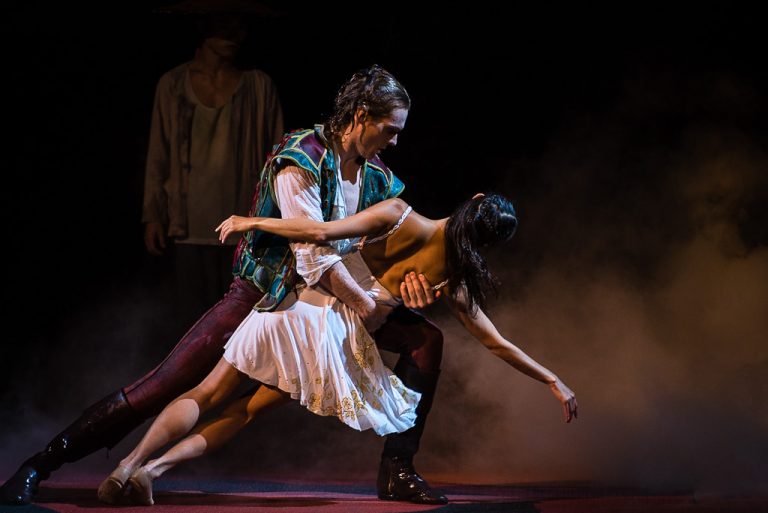 ©Tom Fairchild Photography
©Tom Fairchild Photography8. Look for depth – Foreground, midground, background
Just like taking photos outside of a theatre, typically speaking the more depth your photo has, the better. Very often in theatre photography, you’ll see pictures that are “flat” – lacking depth or perspective. If at all possible, try to have foreground elements, midground elements, and background elements. What is even better is to have “leading lines” that draw the eye into the photo and give the illusion of the 3rd dimension.
Having foreground, midground, and background elements gives this 2-dimensional photograph a 3-dimensional feel.
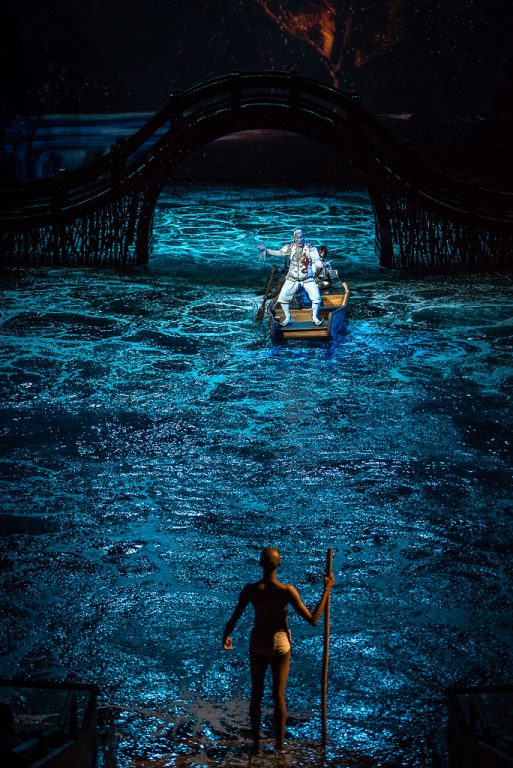 ©Tom Fairchild Photography
©Tom Fairchild Photography9. Equipment
I purposefully left this point to the end because I think entirely too much attention gets paid to it. Photographers always look at getting better gear as a way for them to get better photos and yet gear is almost always not the thing that is holding them back. However, theatres are an extremely tricky environment to shoot in – arguably the trickiest – and having quality gear can make a difference. If you have the choice between a fast prime lens with a large aperture or a kit zoom lens, go with the prime lens as you’ll want to capture as much light as possible. Just about any camera will do a better job in low light than a cell phone. Some photographers like to use tripods or monopods for theatre shooting but personally I tend not to bother with them and consider them to be more trouble than they’re worth. And as a final reminder: make sure your flash is off!
DSLRs are great but GoPros can go anywhere – including underwater!
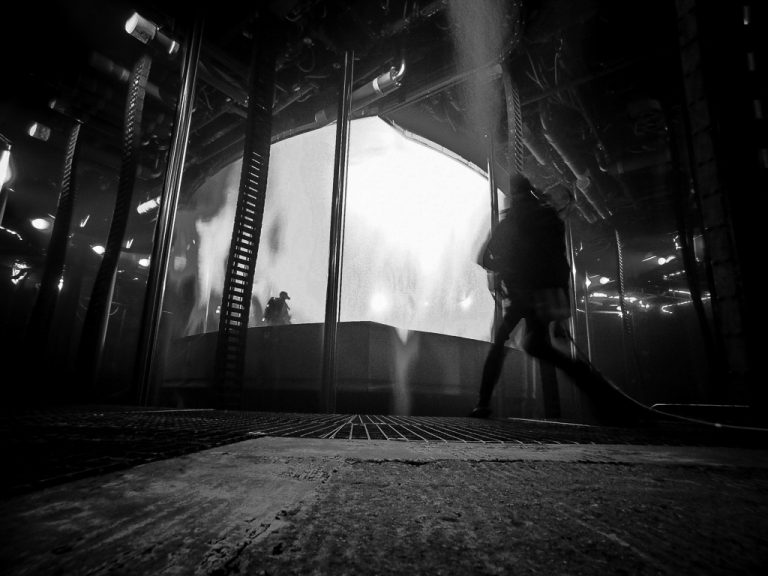 ©Tom Fairchild Photography
©Tom Fairchild Photography10. Shoot tons, Post few
I’ve saved arguably the best tip for last: shoot tons, post few. Early on in my photography career, I got some sage advice – “If you want to be twice as good of a photographer overnight, post half as many photos.” These days are heavy with social media and the tendency is to take absolutely everything you’ve shot and throw it up online. Be picky with what you put out! People get surprisingly quickly bored of photos and only post the best of the best. When was the last time that you looked at every photo of a 150+ photo gallery a friend posted on Facebook? Can’t choose between two shots of roughly the same thing? Flip a coin. If you really can’t choose then it doesn’t matter which one you pick. Looking back at my own data, in one night I shot 1,877 photos between two shows. Out of those, I only have 757 saved (1120 were immediately deleted), 302 are flagged, and I delivered 153 to the client. 153 is still a huge number!
One of the 153 lucky photos that survived out of the original 1,877.
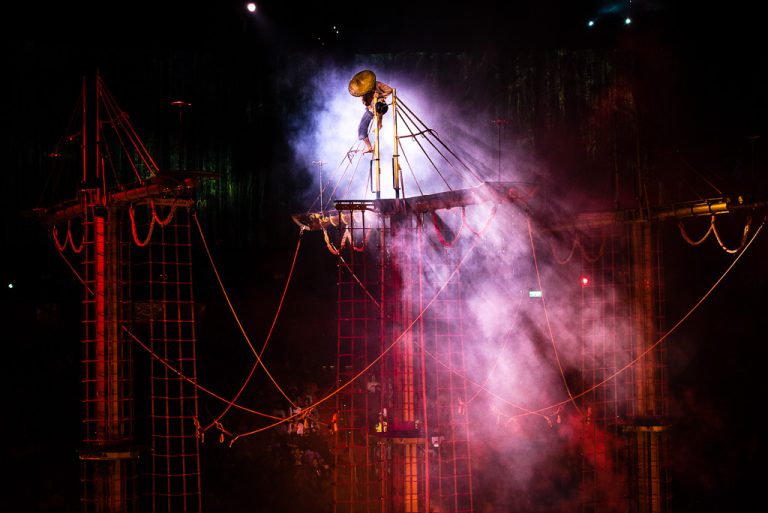 ©Tom Fairchild Photography
©Tom Fairchild PhotographyConclusions
So go out there, shoot, and don’t forget to have fun with it! Hopefully, these tips will help you capture some of the magic that gets made on stage. As I said at the beginning, theatres are incredibly tricky to shoot in but it makes getting that special shot all the more satisfying. Embrace the challenge and go get some good photos!
Environmentally Friendly Travel: Tips for those On The Move
Stage Managers: How to deal with Stress
Join TheatreArtLife to access unlimited articles, our global career center, discussion forums, and professional development resource guide. Your investment will help us continue to ignite connections across the globe in live entertainment and build this community for industry professionals. Learn more about our subscription plans.
Love to write or have something to say? Become a contributor with TheatreArtLife. Join our community of industry leaders working in artistic, creative, and technical roles across the globe. Visit our CONTRIBUTE page to learn more or submit an article.
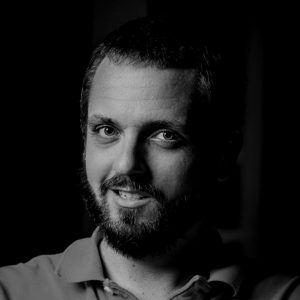

Tom Fairchild considers himself lucky to have had a wide variety of work experience in various industries and various places. For the past 12 years he has lived abroad in the Caribbean, Turkey, and Asia. After studying Mechanical Engineering at Georgia Tech for 3 years, Tom left school to work on yachts in the tropics. Making his way up through the ranks to captain, he crossed the Atlantic by sail and finally moved to Turkey where he managed the complete refit of a 100-foot sailing yacht and a roughly 3 million Euro budget. From that position Tom went on to travel extensively and ended up in Macau, SAR China, working for "The House of Dancing Water" as a Diver Technician. His love of photography grew and grew and finally, he started my own photography business while continuing to work in the theatre industry.
Read Full Profile© 2021 TheatreArtLife. All rights reserved.

Thank you so much for reading, but you have now reached your free article limit for this month.
Our contributors are currently writing more articles for you to enjoy.
To keep reading, all you have to do is become a subscriber and then you can read unlimited articles anytime.
Your investment will help us continue to ignite connections across the globe in live entertainment and build this community for industry professionals.